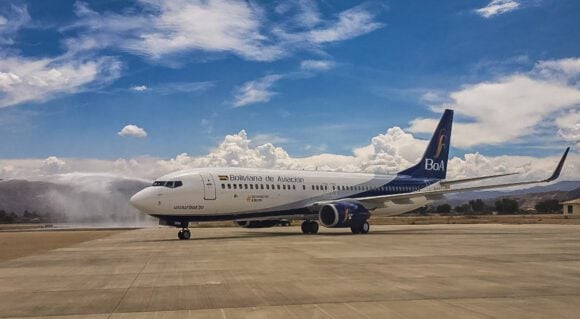
335476239 896277254933983 6282734153658097853 n
Mixed fortunes on the Arabian peninsula: whereas loss-making Oman Air announced a deep restructuring this week, Sharjah-based Air Arabia Group reported a record profit for Q2 on August 11. While this includes a one-off benefit, demand in the region has been and continues to be strong.
The airline reported an AED 459.3 million net profit attributable to shareholders for April-June, up from AED 160.1 million in the same quarter of last year. The one-off receivable from one of its suppliers was AED 157.4 million, up from AED 70.7 million last year. The financial statements don’t identify the supplier.
Q2 revenues were AED 1.396 billion compared to AED 1.114 billion last year as Air Arabia carried 2.3 million passengers versus 1.9 million, or 3.8 million passengers if all hubs are included. The load factor was slightly down to 76 from 79 percent. Operating costs were up to AED 936.9 million from AED 874.5 million. The operating profit was AED 382.2 million, with an operating margin of 27 percent.
“Our steady performance in the first quarter continued to the second quarter, underlining the consistency of our growth strategy and operational excellence. Our team’s dedication continues to drive sustained momentum across our businesses, and we are steadfast in our commitment to continue delivering exceptional value to our customers,” commented Chairman Sheikh Abdullah Bin Mohamed Al Thani in a media statement.
7.7 million passengers in seven hubs
Over HY1, Air Arabia made an AED 801 million net profit, up from AED 451 million in 2022. Revenues grew to AED 2.825 billion from AED 2.242 billion. The operating profit was AED 683.5 million, up from AED 441.6 million. For the whole of 2022, the group booked a record profit of AED 1.222 billion.
The airline group carried 4.8 million passengers, up from 3.6 million, or 7.7 million at all seven hubs in the UAE, Morocco, Egypt, Armenia (FlyArna), and Pakistan (Fly Jinnah). The six-month load factor was 81 percent, up from 79 percent last year. The combined network grew by eighteen new routes.
Air Arabia modestly grew its fleet with three aircraft to 71 aircraft, of which 59 Airbus A320ceo’s and A321ceo’s and nine A321LRs. But compared to Q1, the aircraft were distributed differently over the seven hubs. The number of aircraft in Sharjah was reduced from 42 to 34, while Air Arabia Abu Dhabi grew the fleet from eight to ten A320ceo family aircraft. This only partly explains the Sharjah number, as the based fleet in Morocco (nine), Egypt (four), Armenia (two), and Pakistan (three) didn’t change quarter on quarter.
The airline is due to take delivery of the first of 120 Airbus A320neo family aircraft that were ordered in 2019 at the Dubai Airshow. At the time, they included 73 A320neo’s, 27 A321neo’s, and twenty A321XLRs. Airbus data confirms that this has not hanged.
Air Arabia hasn’t shared numbers for the two newest subsidiaries. It has a 49 percent stake in FlyArna, which has been operational in Armenia since June last year. Pakistan-based FlyJinnah, in which it has a 45 percent stake, launched domestic operations in late October last year. The group hasn’t offered updates on its plans in Sudan that were announced last September.
In his outlook for HY2, Sheikh Abdullah said: “Despite a changing macroeconomic and geo-political environment that we continue to witness, we remain focused on driving profitability and maintaining efficiency across the breadth of our operations, supported by prudent financial and cost control measures taken by the management team. We remain confident in our ability to drive growth while providing our passengers with the best value-driven travel deals”.
The Air Arabia Group ended June with AED 4.7 billion in cash and bank balances and AED 7.6 billion in total liabilities.
Views: 21



